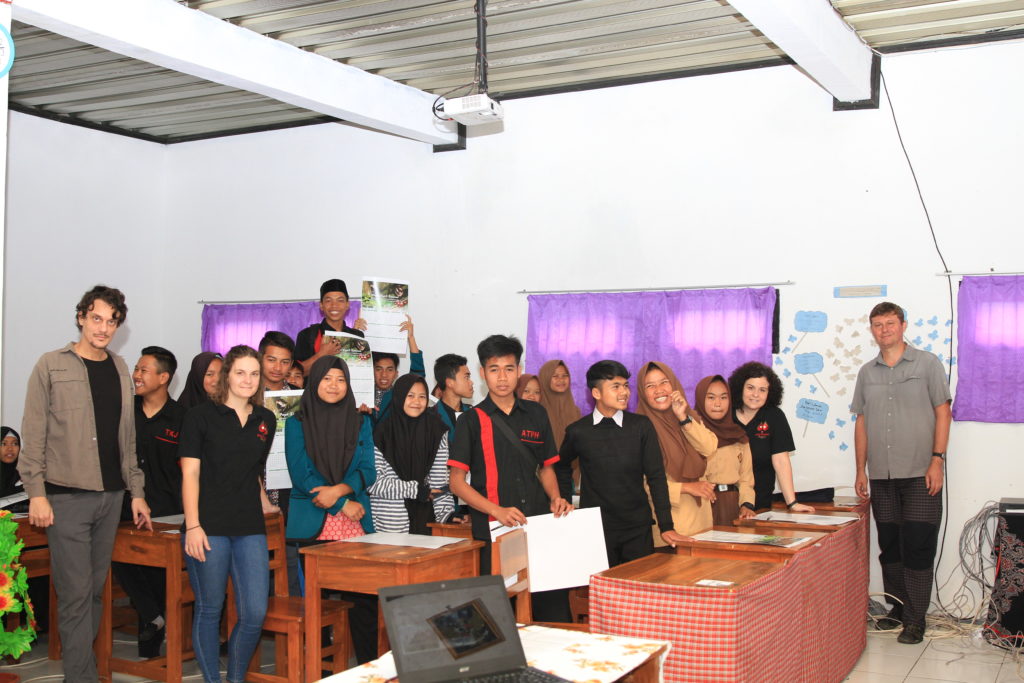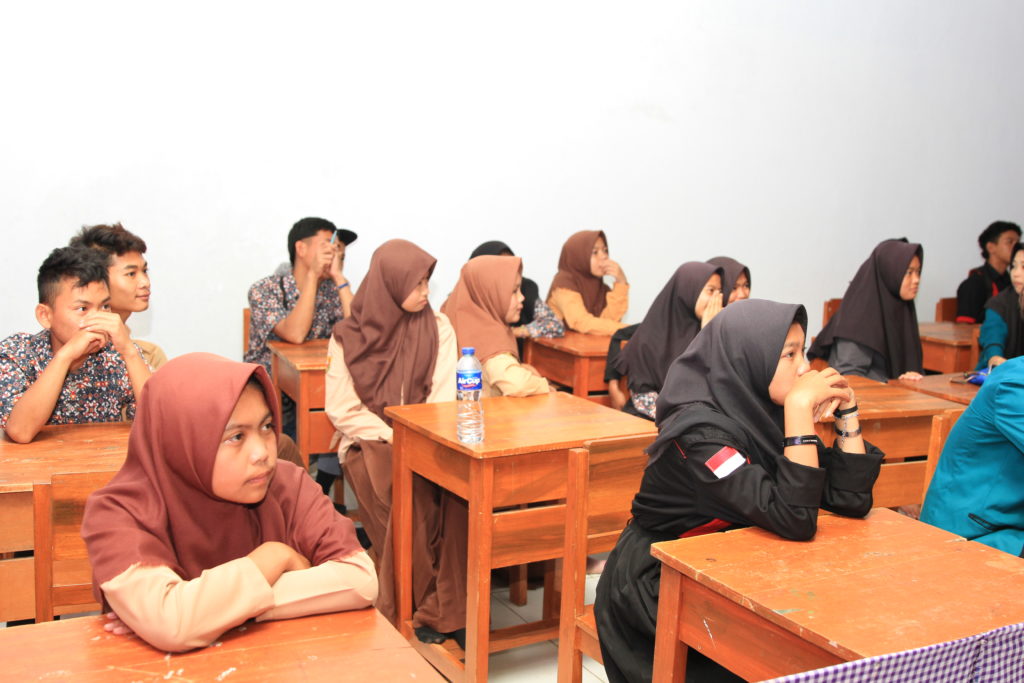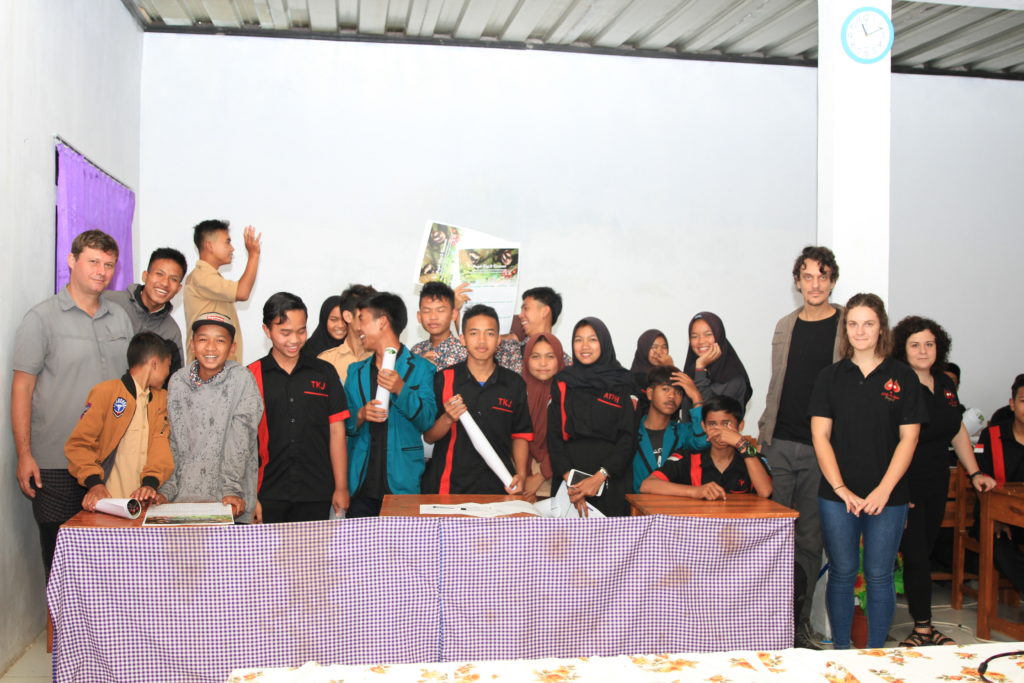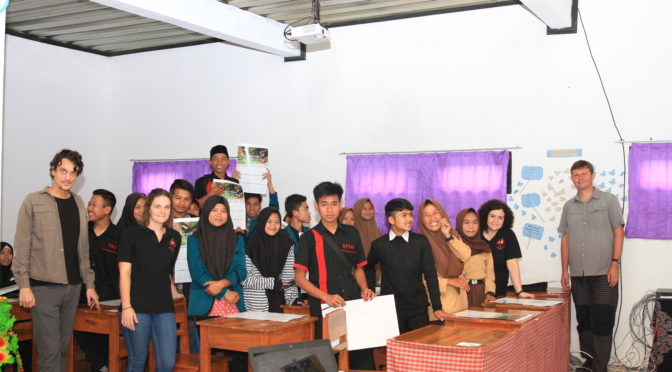Hi everybody, I am Michela, the field station coordinator. Today I would like to talk about the “coffee curriculum” we are teaching the secondary school MTs. Hidayatutthalibin close to Cipaganti. The “coffee curriculum” is part of our coffee project and one of the main aims is to raise awareness among students about the importance of wildlife for coffee plantations.

The first session
In the first session, we did a pre-test to assess the level of knowledge of the students. We asked questions such as the existing coffee certifications, how to make organic fertilisers and peticides, and which are the factors that improve coffee quality. There are three different certifications for coffee plantations that we will explain: organic, fairtrade, and wildlife friendly. Every certification has standards to meet, and we will share the main standards with students. With the pre-test we had the chance to see that students had poor knowledge related to certifications (they often confused famous local brands with certifications). Students had a good knowledge of what organic fertilisers and pesticides are, but they do not how to prepare them. They also mentioned many of the factors that improve coffee quality such as the weather and soil quality, but they did not mention wildlife. We thus decided to do lessons on these topics in future sessions.

The second session
For the second session, we gave a presentation about pollination and seed dispersal. Pollination is how gymnosperm (cone-bearing seed plants) and angiosperms (flowering plants) carry out sexual reproduction. The pollen carries the male sex cells from one plant to the next, allowing plants to cross with other plants far away. A vector is a means of moving pollen from plant to plant. Vectors may be wind or animals. We made examples of different vectors by showing a video, and we also made several examples of local vectors. The students were not aware of the fact that lorises are also vectors and we showed them a video of a slow loris feeding nectar on kaliandra merah. Once fruits and seeds are formed it is essential for the seeds to be moved away via vectors to avoid competition. We showed a video of different vectors and we went more in details showing coffee vectors. The main vector for coffee seed dispersal is civet. Civets can improve coffee quality by choosing the best coffee cherries. This is why it is also important for farmers to let them free in the coffee plantations instead of keeping them in cages. This was, according to the students, the most interesting fact they learnt in this session. We also explained the advantages of shade-grown coffee: to protect coffee from direct sun, to increase soil quality, and to increase biodiversity in coffee plantation which leads to increase the presence of vectors for pollination and seed dispersal.

Future sessions
For the future session, plan to invite a group of farmers who received the training to give a demonstration of how to make organic fertilisers. Moreover, another session will be about different coffee certifications. This would not have been possible without the help of our tracker Aconk, who is also an English teacher at this secondary school. Since I speak basic Indonesian, we usually give the lesson together, where I explain some concepts and he translates for me. Aconk is very talented, he knows how to keep the students engaged and how to entertain them. I will let you know in a future blog about the progress of our curriculum. Thanks for reading! MICHELA BALESTRI

